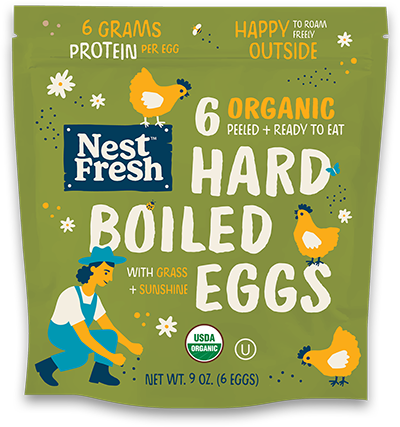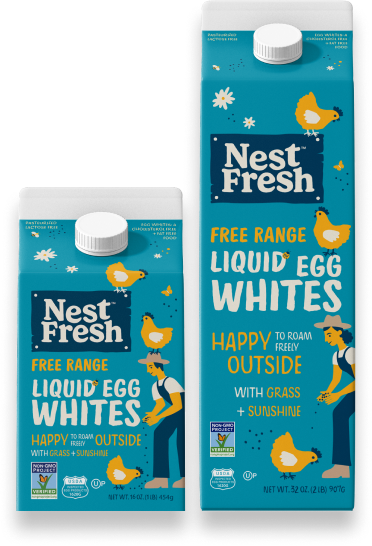In our latest guest post from Colorado Egg Producers, our fellow Colorado egg farmers explain common egg terms and best practices.
The average American today is at least three generations removed from the farm. This can make it tough for many to look past the grocery store shelf and truly understand where their food comes from, how it’s made and what it all means. Food labels can be especially confusing as we try to eat healthy and understand what we put into our bodies. The Colorado Egg Producers (CEP) Association wants to help Coloradans understand not only how their eggs are produced, but also what all those bewildering terms on egg cartons really mean.
“We take pride using sustainable, mindful practices to produce a high-quality, healthy product for consumers,” said Vince Ruscitti, a Colorado egg farmer and CEP member. “We also take pride in giving consumers a choice by producing the different kinds of eggs that you see on grocery store shelves. Our goal is to ensure that Coloradans can feel confident about the eggs they buy. That is why CEP seeks to continuously educate consumers about egg production, nutritional value and safety.”
The Egg Nutrition Center offers a guide for consumers that explains how eggs are labeled. Here’s a look at some of the most prevalent terms:
• Produced without antibiotics: Eggs produced in the U.S. are generally antibiotic-free. Antibiotics are not used on a continuous basis in the egg industry, and though antibiotics may be used for hen health, antibiotic residue is not present in eggs.
• Brown eggs: Eggs that are laid by hens with red feathers and red ear lobes. The nutrient content, quality and flavor of brown eggs is the same as white eggs.
• Cage-free: Eggs laid by hens at indoor floor operations. The hens may roam in a building, room or open area, usually in a barn or poultry house, that include nest space, perches and unlimited access to fresh food and water. Cage-free systems vary and include barn-raised and free-range hens, both of which have shelter that helps protect against predators and bad weather. Both types are produced under common handling and care practices. Depending on the farm, these housing systems may or may not have an automated egg collection system.
• Free-range eggs: Eggs produced by hens that have access to the outdoors in accordance with weather, environment or state laws. The birds have continuous access to fresh food and water and may forage for wild plants and insects. They are also provided floor space, nesting space and perches.
• Natural: USDA identifies all shell eggs as natural.
• Nutrient-enhanced eggs: Eggs that are produced by hens fed a special diet that may include things like flax seed, marine algae or fish oils.
• Certified organic eggs: Eggs that are laid by cage-free, free-roaming hens raised on certified organic feed with access to the outdoors. The hens’ feed is grown without most synthetic pesticides, fungicides, herbicides or fertilizers, and 100 percent of the agricultural ingredients must be certified organic. Antibiotics and growth hormones are prohibited (although these will not be found in any shell eggs).
• Pasteurized eggs: Eggs heated to temperatures just below the coagulation point to destroy pathogens. Pasteurized eggs have the same nutritional and protein content as conventional eggs. These eggs are recommended for recipes that call for raw eggs or for people susceptible to illness who prefer runny eggs. Pasteurized eggs must be kept refrigerated.
• Pasture raised eggs: Pasture raised eggs originate from hens free to roam and forage on a maintained pasture area. The hens are moved to various pasture areas to maintain a constant supply of vegetation for the hens.
• Vegetarian fed eggs: Produced by hens fed a vegetarian diet.
No matter how they’re produced, all eggs are rich in nutrients and vitamins. In fact, a single egg contains almost all of the essential protein, minerals and vitamins the human body needs.
While providing consumers with a choice is important, CEP members also strive to ensure that our eggs are produced using the highest standard of industry best practices. In fact, we were the first state to develop and implement an Animal Care Doctrine, which can be found on our website. Each of our producers is committed to the best possible care of chickens based on scientific principles and animal husbandry standards.
CEP members ensure the health of our hens through stringent disease prevention measures and rapid medical response. Given recent concerns over the spread of Avian Influenza in other states, Colorado producers are taking every precaution to maintain the health and safety of our hens. To learn more about how CEP is addressing Avian Influenza, visit Colorado Egg Producers Myth Busters.
You can learn more about egg production and where to purchase Colorado eggs by following us on CEP Facebook, CEP Twitter and CEP Pinterest. To learn more about CEP please visit Colorado Egg Producers.
The Colorado Egg Producers (CEP) Association is a membership organization representing seven farms throughout Colorado. CEP is committed to doing what’s right for its community, as illustrated by their regular donation of thousands of eggs to food banks throughout the state and its partnership with the Good Egg Project, an initiative from America’s egg farmers that aims to educate people about where eggs come from and to encourage Americans to help conquer hunger in the U.S. Egg farmers throughout Colorado pride themselves on providing a high quality, protein-dense food like eggs to citizens in this great state.




